Bringing the lofty ideas of pure math down to earth
There is no shortage of popular books and lectures on math—but they can only teach us so much.
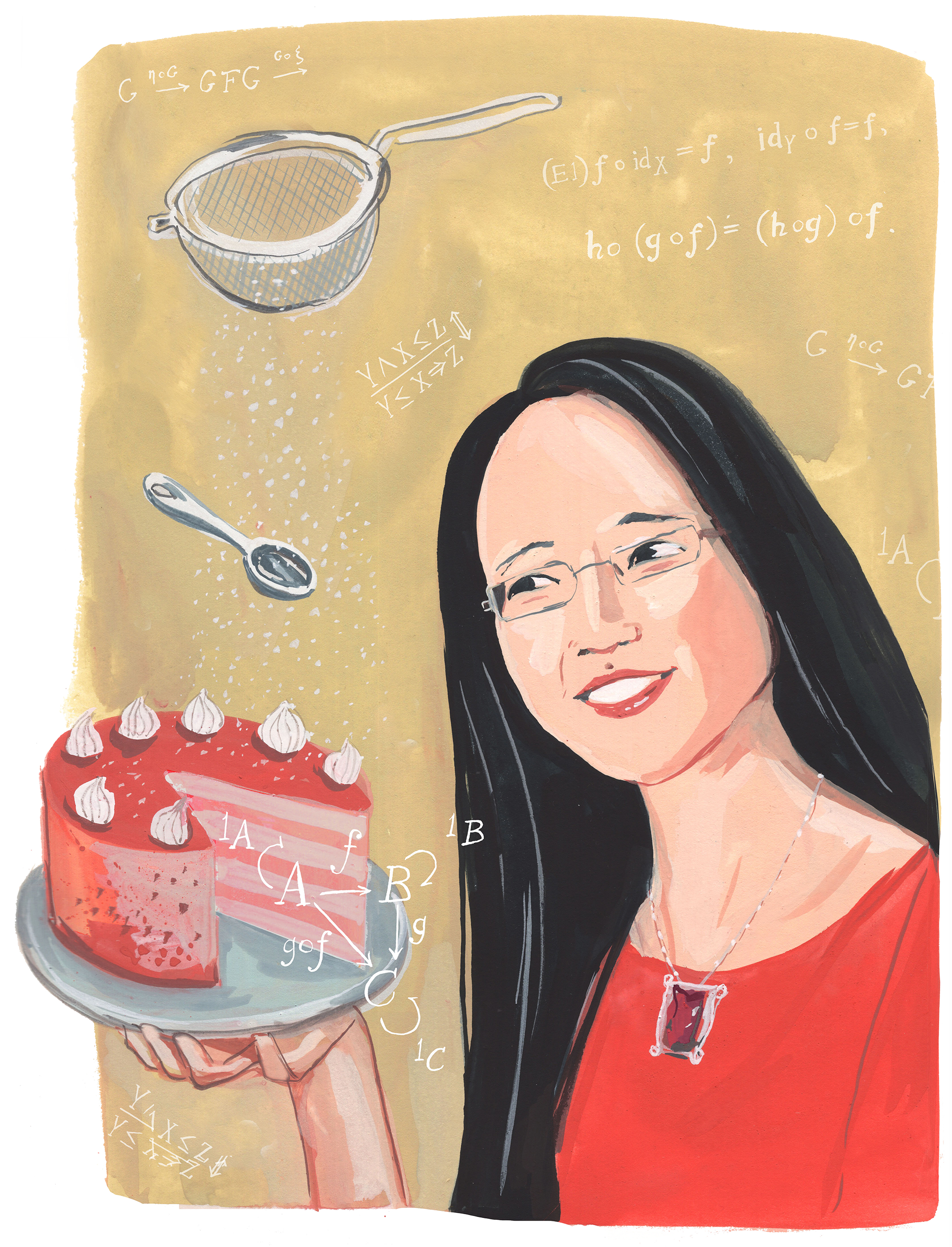
Mathematics has long been presented as a sanctuary from confusion and doubt, a place to go in search of answers. Perhaps part of the mystique comes from the fact that biographies of mathematicians often paint them as otherworldly savants—people who seem to pull nature’s deepest truths from thin air and transcribe them in prose so succinct and self-assured it must be read meditatively, one word at a time. As a graduate student in physics, I have seen the work that goes into conducting delicate experiments, but the daily grind of mathematical discovery is a ritual altogether foreign to me. And this feeling is only reinforced by popular books on math, which often take the tone of a pastor dispensing sermons to the faithful.
In physics, the questions we ask and the theories we come up with aim to explain the underlying reality better. Indeed, certain concepts—like the fact that opposite charges attract or that disorder or entropy tends to increase—are so universally ingrained in our experience that they creep into everyday language as metaphors. I often catch myself resorting to the vocabulary of research and analogies from physics to explain myself. But despite having been close to math for most of my life, I continue to be bewildered by mathematics research. What motivates it, and what is its ultimate endgame? What does the world look like to someone steeped in the culture of mathematics? So when I discovered that Terence Tao, a living legend of contemporary math, was offering an online class on his approach to “mathematical thinking,” I had to check it out.
The movie-length course, distributed by MasterClass, starts out invitingly enough. Tao exudes calm and confidence. A mathematical mindset, he says, makes “the complex world a bit more manageable.” He suggests that his class might be “even more suitable for those without formal math training.” But very soon, the futility of this attempt to pierce the mystique of mathematics becomes inescapable.
For most of the session, Tao is seated in a white armchair; there are no blackboards, no pens, no paper. “Mathematics is a language of precise communication,” Tao says, and yet here, he is without the most powerful tools for achieving that. Although he tries to be approachable, talking about how he once did poorly in an exam and struggles to assemble window curtains, I felt no closer to the world of math. After 90 minutes of watching, the pithy takeaways I was left with were indistinguishable from what I might learn at a mindfulness retreat: ‘‘Everything is united” and “Embrace failure.”
I am not the only person who has tried—and failed—to break into the church of math. Recently, Alec Wilkinson, a writer for the New Yorker and a longtime believer in self-improvement, took on a yearlong project to conquer some of the basic mathematics that evaded him in his youth: algebra, geometry, and calculus. In his 2022 book A Divine Language, he describes his journey as a quest for redemption after those struggles with high school math. “It had abused me, and I felt aggrieved,” he writes. “I was returning, with a half century’s wisdom, to knock the smile off math’s face.”
Wilkinson has a better plan than mine: he starts with standard textbooks. And he has help. His niece, a math professor, agrees to hold his hand through this journey. But even the first steps through algebra are backbreaking. The skepticism of an adult gets in the way; he cannot seem to accept the rules—the way variables can be added and multiplied, how fractions and exponents work—as readily as children do. What’s more, he finds the textbook writing atrocious.
Revisiting algebra as an adult, Wilkinson declares, is “like meeting someone you hadn’t seen in years and being reminded why you never liked him or her.”
“There is a boosterish quality to the prose, as if learning math is not only fun! but also obscurely patriotic, the duty of an adolescent citizen-in-waiting,” he writes. “In addition to leaving things out, they were careless about language, their sentences were disorderly, their thinking was frequently slipshod, and their tone was often cheerfully and irrationally impatient.” Though he wrestles algebra with decidedly determined rigor, six hours a day for six to seven days a week, and obsesses about it the rest of the time, simple competence continues to elude him. Revisiting algebra as an adult, he declares, is “like meeting someone you hadn’t seen in years and being reminded why you never liked him or her.”
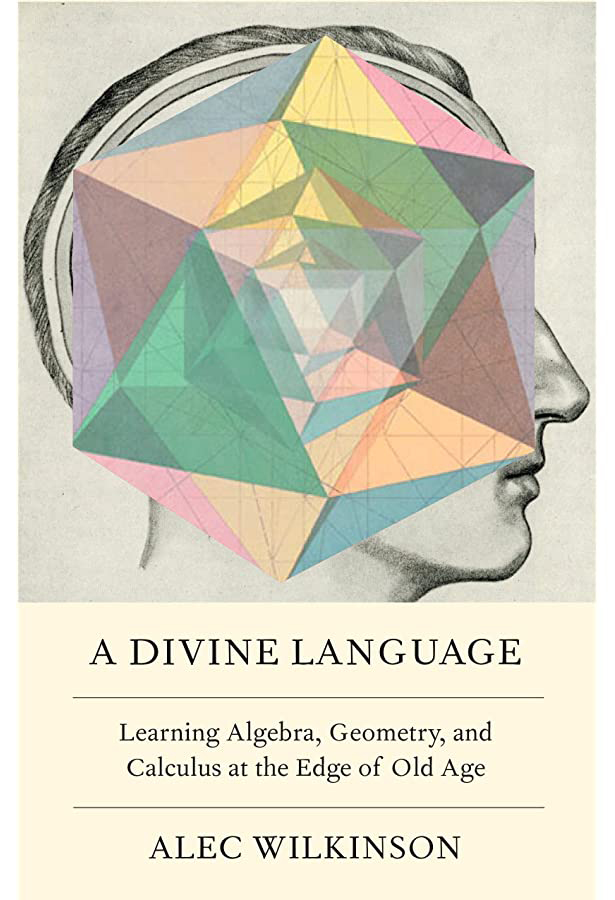
When Wilkinson is not hunched over textbooks, he is dazzled by the mysticism surrounding math. The mathematicians he talks to speak of their profession with quasi-religious sentiments and think of themselves as mere prospectors of a transcendental order. When Wilkinson complains to his niece that math is not yielding to him, he is told, “For a moment, think of it as a monastic discipline. You have to take on faith what I tell you.” Where his niece and others see patterns and order, he perceives only “incoherence, obfuscation, and chaos”; he feels like a monk who sees lesser angels than everybody around him. He is now reproachful of his education and his younger self: Why hadn’t he learned all this better when he had the impressionability of a child?
A year later, Wilkinson can solve some calculus problems, but the journey was difficult, the terrain harsh and often unwelcoming. Math often gets talked about as a language with logic as its grammar. But when you learn a language like Spanish, you can casually pick up some words and immediately unlock a new culture. The introductory steps to formal math, on the other hand, demand a commitment to rigor and abstraction while withholding any usefulness. Among mathematicians, as Wilkinson discovers, there is even a general derision toward those who seek useful application. There is G.H. Hardy’s famous jeer in 1940, “Is not the position of an ordinary applied mathematician in some ways a little pathetic?” Or a more recent remark by John Baez: “If you do not like abstraction, why are you in mathematics? Perhaps you should be in finance, where all the numbers have dollar signs in front of them.” Math’s only promise in return for unwavering fealty is that of a higher plan, much as in a cult. Wilkinson is left as dazed and exhausted as a victim of a shipwreck stranded in the Arctic.
My frustrations and Wilkinson’s highlight the inadequacies of the mediums usually employed in teaching mathematics.Textbooks aren’t always written with accessibility in mind. They vacillate between pedantry and hand-wavy dismissals, and the exercises they present can appear to be a series of pointless drills. At the same time, attempts at an overview can feel frustratingly empty. What Wilkinson and I really needed was a sympathetic voice—the testimony of one who has climbed the heights of abstract math but also has the patience to guide a newcomer.
The mathematician and concert pianist Eugenia Cheng is the closest I’ve come to finding such a voice.
I got into Cheng’s books because I share her love of baking. For the proud owner of a stand mixer and several pastry brushes, the title Cakes, Custard and Category Theory sounded too delectable to pass up. Its first chapter, about the epistemic nature of mathematics, starts with a recipe for brownies. Cheng tells you that stumbling into new ideas in math is like screwing up a soufflé recipe so badly that you end up with cookies. I was easily drawn in.
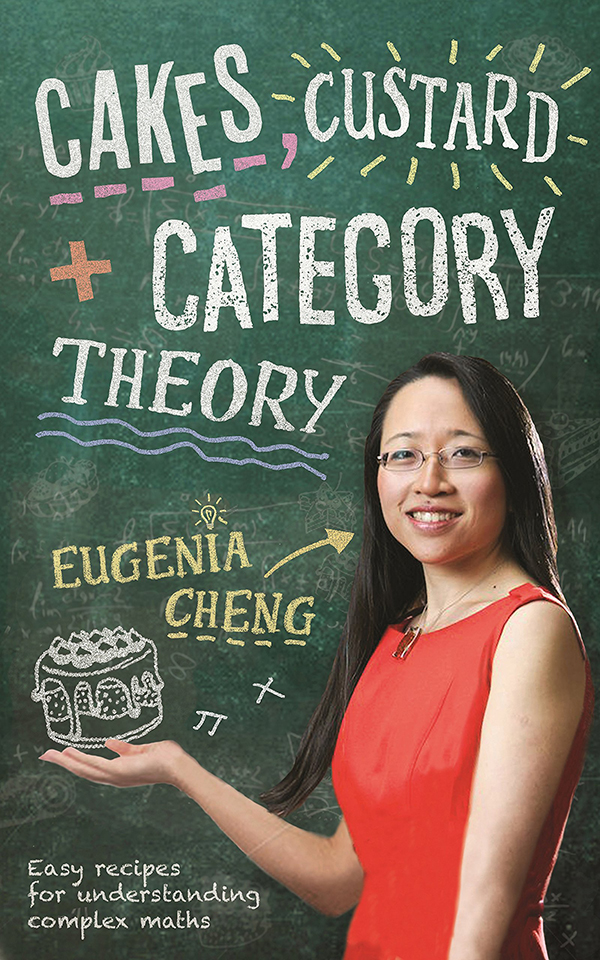
Many popular books on mathematics try to be approachable by talking about stock markets or poker odds.Others wax poetic about prime numbers and the mystery of infinity. Cheng’s books lift readers to the rarefied heights of mathematical abstraction by teaching them category theory, which she believes is the most foundational kind of math.
Category theory may seem esoteric, but it is the underlying grammar of mathematical logic. Cheng’s books pull back the curtain to show how pedestrian mathematics research can be; the act of chaining simple inviolable axioms into complex arguments is simply the ivory-tower equivalent of building a Lego spaceship from tiny, indestructible pieces. More important, they are an invitation to change your worldview, to simplify thinking with abstractions, to interpret and analyze the world in mathematical terms.
Reading Cakes, Custard and Category Theory (also issued as How to Bake Pi), one soon discovers that the desserts are mere gambits. Each chapter begins with a recipe followed by an analogy between math and baking. Puff pastry is a reminder that extreme precision is a part of mathematical research; elsewhere, we learn that there is really no right way to make a cake and that we should embrace flexibility in ingredients as well as techniques. These analogies can feel tenuous, sometimes even forced. But thankfully, they quickly fade away to make room for a casual conversation about mathematical topics.
Cheng thinks the steely vocabulary of logic can help people caught in a heated argument realize that the divide between them isn’t so irreconcilable.
Cheng’s latest book, The Joy of Abstraction, builds on similar themes but feels more like an undergraduate textbook. Its chapters, with titles like “Isomorphism” and “Functors,” provide a fairly rigorous introduction to category theory and are replete with theorems, proofs, and exercises. Occasionally, Cheng goes on a tangent about how certain concepts have etymological and semantic parallels to real life—a “function” can be thought of as a vending machine, a “set” may represent a group of people (and you can divide that set into “partitions” of “friendships”). But having set up the stage using familiar objects, she quickly gets to the hard work of manipulating them using logic. In short, her books are a humane introduction to foundational math, and they paint a good picture of what mathematicians spend their time thinking about.
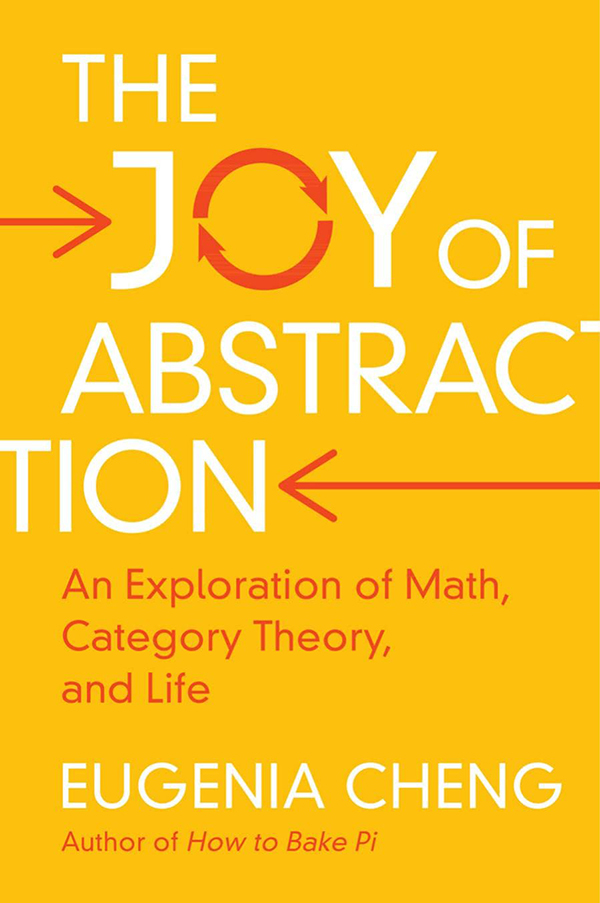
There is, however, one major way her math books markedly differ from undergraduate textbooks. A persistent theme running across Cheng’s writing is that the world is best understood in a stripped-down form, and that insights from abstract math can even nourish empathy and a sense of justice. Friends trying to be sympathetic to a heartbreak by prying into painful details should content themselves with simply knowing that a) there was something you loved and b) you recently lost it. It’s as simple as that; all other details are superfluous.
Cheng’s more unorthodox contention—one best presented in her book The Art of Logic in an Illogical World—is that category theory can, in fact, be deployed in our daily lives to make discussions around privilege, sexual harassment, racism, and even “fake news” less divisive. For instance, she thinks that the debate about social welfare can be described in terms of “false positives” and “false negatives”: “a false negative in this case is someone who deserves help but doesn’t get it; a false positive would be someone who doesn’t deserve help but does get it.” The debate, her argument goes, isn’t about whether we should help people (of course we should!) but rather about the extent to which we accommodate such false positives and false negatives. Someone who wants to reduce the amount of money spent on social welfare is probably bothered by the idea that false positives are abusing the system by collecting benefits they don’t deserve. Cheng thinks the steely vocabulary of logic can help people caught in a heated argument realize that the divide between them isn’t so irreconcilable (after all, they both want to help people) and steer them toward a more nuanced conversation of “to what extent” and “under what circumstances.”
Cheng believes we can encourage empathy through logically related analogies. Initially befuddled by men who protest sweeping accusations of privilege or aggression, she finds it helpful to compare their protests to the exasperation she feels when people resent graduates of elite schools (like herself) for having success handed to them by parents even though Cheng herself had to work hard. This, we are told, has made her more empathetic toward men: emotions rightfully flare up when individual experiences contrast with group generalizations.
However, applying such arguments to more complex cases feels increasingly suspect. A diagram that appears in many of Cheng’s books is the “cube of privilege.” In one corner of the cube is the empty set {}. Starting from that corner (bottom front left in the illustration), you can move in three directions to collect one of three types of privilege: white, male, and rich. If you move in all three directions, one after another, you end up in the opposite corner with all privilege points: {white, male, rich}.
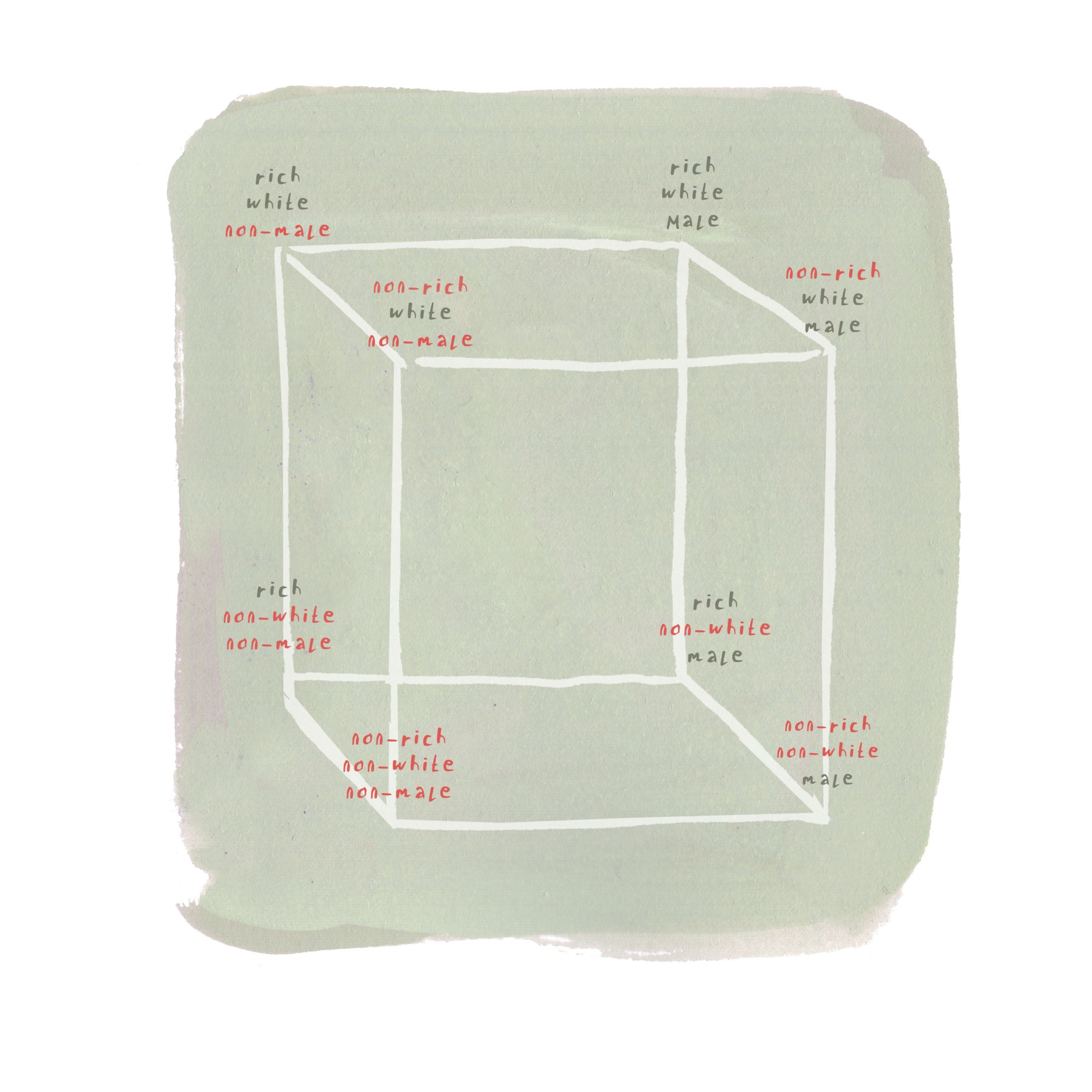
To a category theorist, this is the most succinct description of intersectionality: the idea that attributes like class, gender, and race can interact to produce complex manifestations of inequality. Cheng’s diagram shows how combinations of privilege in multiple dimensions can form complicated hierarchies, so that people with three types of privilege are necessarily better off than people with only two types. But when Cheng uses this diagram for insights on thornier questions, like why “white men who did not grow up rich” may feel particularly aggrieved by non-white men who are richer and better off, her answer is unsatisfying: in the cube of privilege “there is no arrow from rich non-white men to non-rich white men (the two groups inhabit disconnected corners of a diagonal), so the theory of privilege does not say anything about the relative situation of these two groups.” The cop-out may be logically consistent, but it is certainly not the rhetorical coup de grâce one hopes to learn after engaging with abstract reasoning for several weeks.
One may equip people with rigorous tools to avoid the slipperiness and ambiguity of everyday language, but these tools don’t always come with ethical guidelines. The Malthusian panic over population explosion, for example, emerged from observations about the exponential function and has been used to justify anti-immigration policies as well as genocides. Mathematically inspired computer models are routinely shown to have bias. A highly controversial book from 1994 hid its dubious efforts to connect race with intelligence behind the mathy title The Bell Curve. As in the Bible, Tocqueville’s Democracy in America, and other revered tomes, there is enough in the vast literature of math to justify and reinforce any kind of thinking, however contrarian, problematic, or silly.
Yet there is still a sense in which Eugenia Cheng’s mission of demystifying math is extremely noble. Her books try to replicate the humdrum ritual of constructing arguments from ironclad proofs, and—more important—they show what a math-inspired view of the world could look like, both in its oddity and in its permissiveness. You may find such a worldview odious and disagreeable, but the key lesson from Cheng’s books is that communicating a complex thought from one mind to another, let alone across cultures and languages, is no easy feat and that the art of expressing ideas charitably and with clarity is something we all would benefit from getting better at.
What I find most inspiring about the culture of mathematics is how it has endured through the ages, needling a common thread across civilizations. Math has managed to unify disparate discoveries across the globe, and the puzzles raised centuries ago are still being pondered. One reason this culture may appear mystifying for a beginner is that contemporary math has whittled down millennia-old ideas, once rich and vivid, into terse symbols and esoteric terminologies that aren’t always easy to master. Popular math books seek a fresher take on these old ideas, be it through baking recipes or hot-button political issues. My verdict: Why not? It’s worth a shot.
Pradeep Niroula is doctoral candidate in physics based in Washington, DC.
Deep Dive
Humans and technology
Building a more reliable supply chain
Rapidly advancing technologies are building the modern supply chain, making transparent, collaborative, and data-driven systems a reality.
Building a data-driven health-care ecosystem
Harnessing data to improve the equity, affordability, and quality of the health care system.
Let’s not make the same mistakes with AI that we made with social media
Social media’s unregulated evolution over the past decade holds a lot of lessons that apply directly to AI companies and technologies.
Stay connected
Get the latest updates from
MIT Technology Review
Discover special offers, top stories, upcoming events, and more.